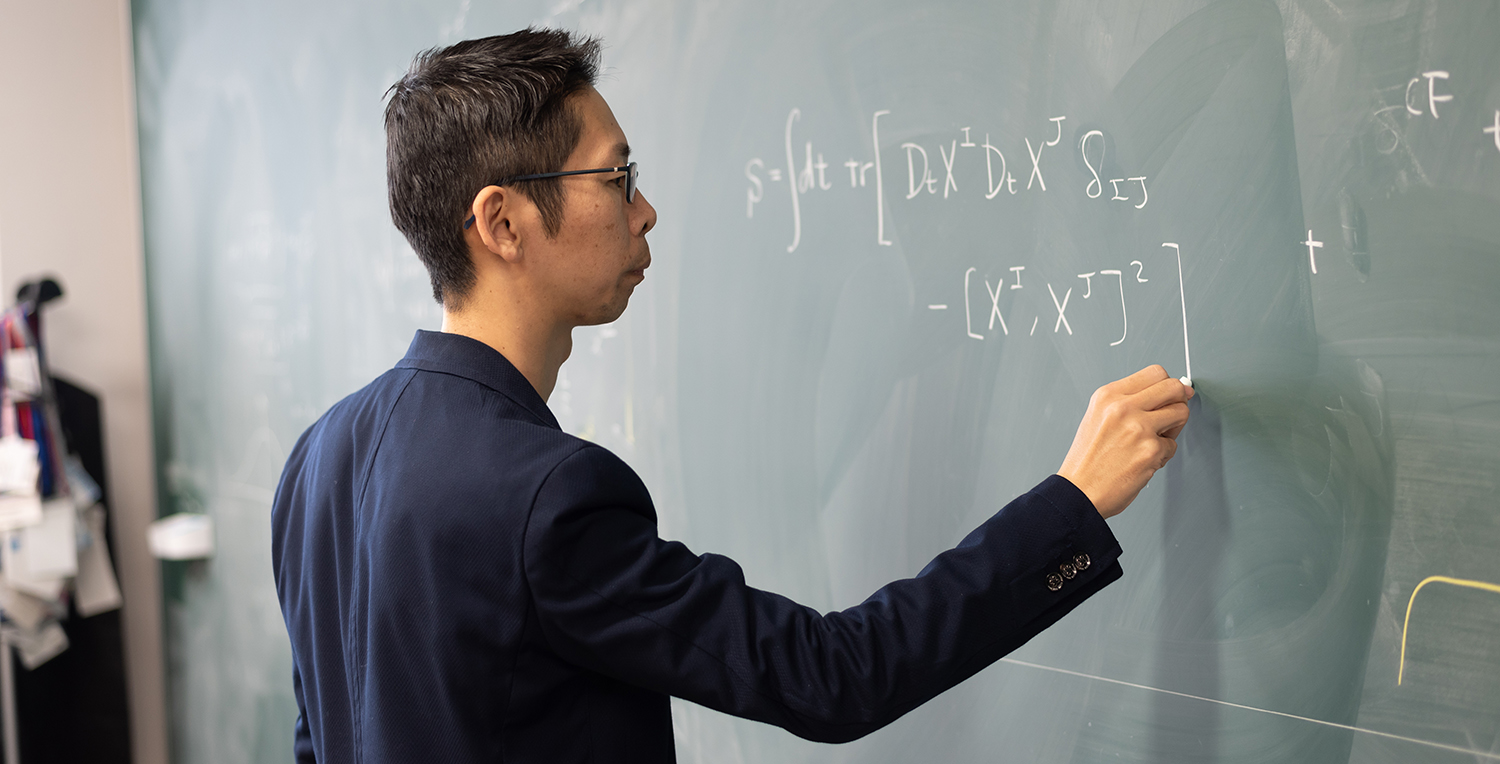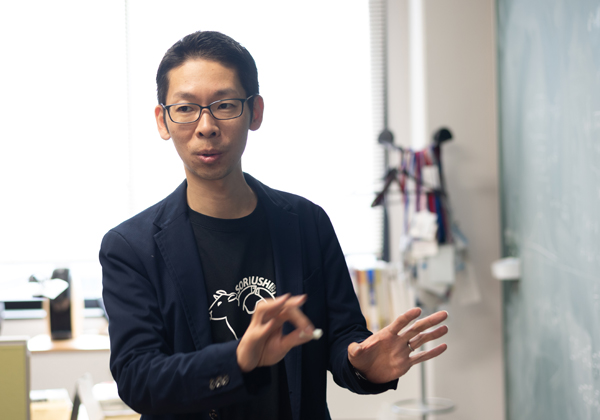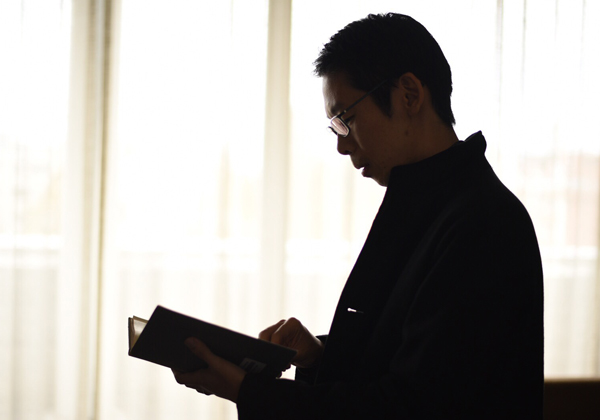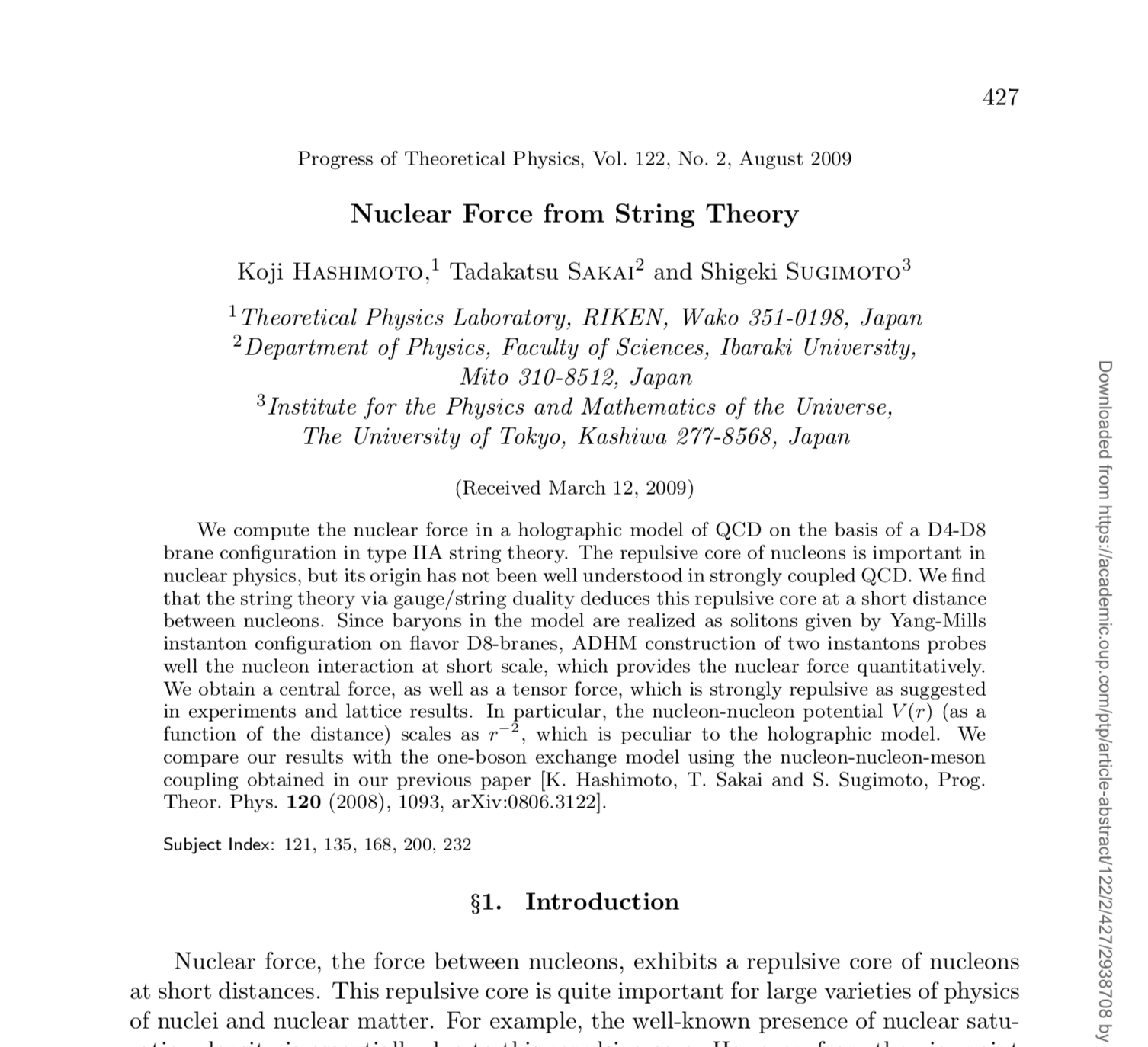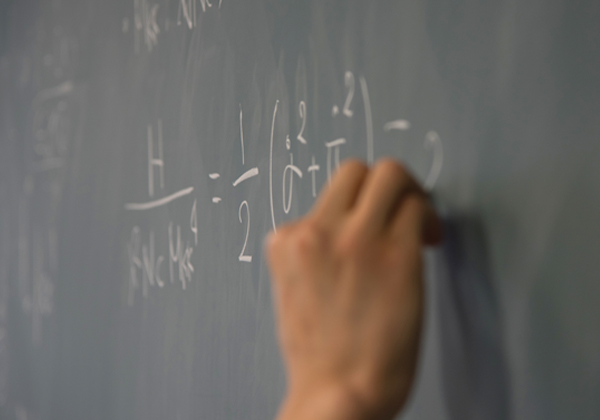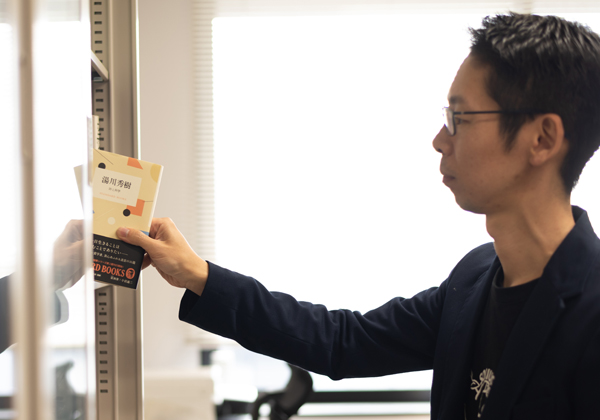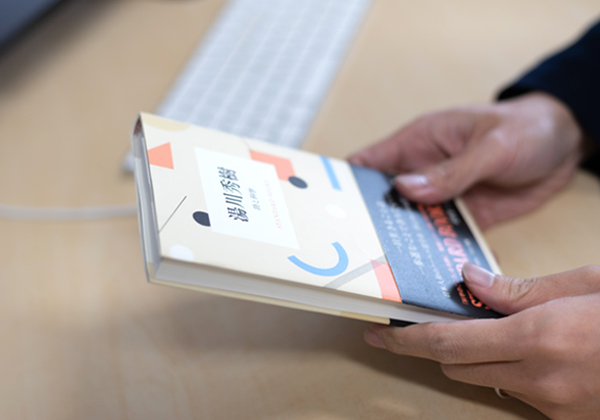I met Dr. Yukawa three times in my life.
I met Hideki Yukawa three times in my life.
I encountered him in three completely different contexts. For some reason, I feel it natural for Hideki Yukawa to appear in front of me at different turning points in my life as a physicist because Yukawa was a great physicist, he built the foundation of modern physics and he had a magnetic personality.
|
My first encounter with Yukawa was through his autograph. I did not grow up as a “science boy.” In interviews, many physicists mention episodes that they read in the biography of Hideki Yukawa at young ages. I think it’s cool. I didn’t know about Hideki Yukawa until I was in my third year at the university. Even after learning about Dr. Yukawa in the physics class, to me he was still a gray historical figure no different from other scientists or mathematicians. When I joined the Theoretical Particle Physics Group in Kyoto University Graduate School, my eyes caught the sight of a small autographed paper hanging on the southern wall in the seminar room. What I saw was a poem composed by Hideki Yukawa and written in small characters by Yukawa himself. When I was staring at it, I was struck by the sudden realization that I had transcended time and was standing at the place where Yukawa used to study and conducted research. It was the first moment I felt Hideki Yukawa as a “human being” just like you and me. In the seminar room, we hold discussions and debates on the subjects related to physics every week. I used to imagine occasionally that Hideki Yukawa might be watching our discussions through the autographed paper on the wall. Later, I decided to concentrate on the research on the superstring theory, which is the quantum theory for gravitation, so I found myself moving away from the field of nuclear physics that Yukawa explored and pioneered. Eventually, Dr. Yukawa has become simply one of the greatest figures in the history for me. |
|
|
|
I met him the second time purely in the world of physics. After learning the superstring theory in the master’s program, I continued to study the quantum theory of gravitation as a natural course of learning. The superstring theory is perhaps closer to mathematics than any other branches of physics. Research papers in this field of study focus on the logical consistency in the quantum field theory and gravity theory. For instance, the units of measurement used in physics, such as kg and eV, are not seen anywhere in those papers. Therefore, what I study is far from the physics dealing with protons and neutrons that Yukawa pioneered. Historically speaking, the string theory was introduced in about 1970 by Yoichiro Nambu et. al. for the purpose of describing the protons and neutrons. That field of research took a long detour and merged into the mainstream of science. In about 2008, there was a significant progress in the research, confirming that the quantum theory of gravitation called the superstring theory was equivalent to the theory of quarks (constituents of the proton and neutron). Thus, it became possible to describe the protons and neutrons by using the superstring theory. At about that time, I was studying Yukawa’s theory in detail for the first time. I wrote a paper in which I described the nuclear force resulting from Yukawa’s particles using the superstring theory. For a physicist, meeting a great figure during his research is an innate experience. A physicist can “play” with the concept developed by that physicist day in and day out until he or she understands the concept as if he/she developed it on his/her own. For me, Hideki Yukawa has become part of me ever since I wrote the research paper in 2009. |
|
I met him the third time as a “human being.” Just about when I started working as a professor at The University of Osaka, people around me noticed that I have a “blackboard fetish.” Thanks to that, Yukawa’s blackboard was brought from Columbia University to The University of Osaka. I thought bringing Yukawa’s blackboard to The University of Osaka would be good for the students and researchers, so I did so purely out of my desire to contribute to the university and scientific circle. However, when I touched the blackboard for the first time after it was transported over the long distance by a ship, I couldn’t help but have mixed feelings. I felt as if Hideki Yukawa’s thoughts were transmitted to me through the cold slate surface of the blackboard. Of course, that was nothing more than my imagination. But, my simple action of writing on the blackboard used by Hideki Yukawa made “Yukawa’s theory” in me elevate to the human being, Hideki Yukawa, who constructed the theory ahead of others.
|
|
|
|
To be honest, I don’t feel much human warmth in Hideki Yukawa. That is probably because I thoroughly read a very personal and warm diary written by Shin-ichiro Tomonaga. I am interested in the relationship between the human’s cognition and physics. Since I conduct research on the space and time of a higher dimension, I once wrote a “higher dimension story” based on my specialized knowledge. The story is something resembling poems, and it was a strange result of my struggles to expand my cognition to a higher dimension. Strangely, the collection of Hideki Yukawa’s essays published in 2018 was titled “Poems and Science.” I didn’t even know he wrote such an essay until then. When I saw that book in the bookstore, I grabbed a copy in wonderment and began reading. The book contained wonderful statements that coordinately described the human cognition based on the comparison of poems and science. Physicists are humans. Physics was created by the individuals, and Hideki Yukawa was one of them. I am deeply moved by the fact that I am immersed in the body of physics as a physicist. I’m sure Hideki Yukawa will continue to live as a “human being” in my mind. |


